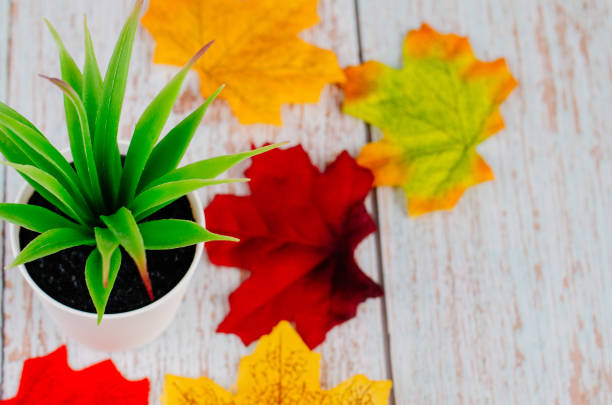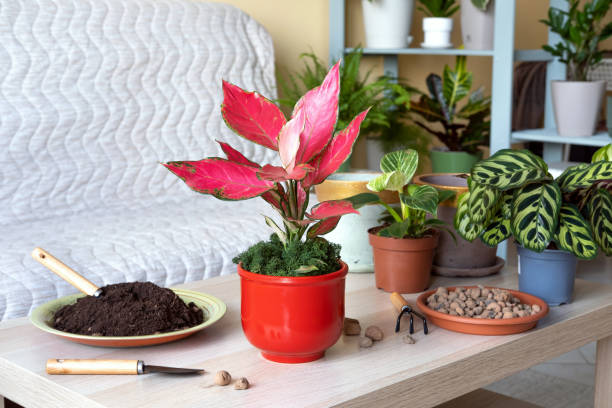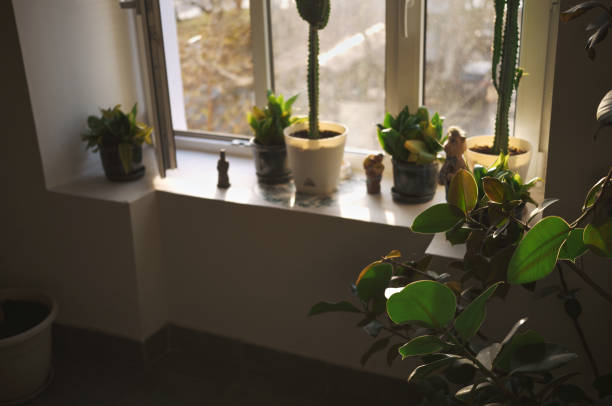Winter can be a tough time for indoor plants. The days get shorter, the air gets drier, and the cold weather makes it harder for them to stay healthy.
While indoor plants don’t require as much work as outdoor gardens, they still need special care to stay strong during the winter months.
Healthy indoor plants do more than just make your space look pretty. They purify the air and help your home feel calm and cozy, which is especially helpful when the winter months feel gloomy by knowing what your plants need and making a few simple changes. This guide will show you how to keep your indoor plants thriving all winter long.
Winter can be a tough time for indoor plants. The cold weather brings some issues that can affect how your plants grow, look, and stay healthy. Let’s take a look at some of the main challenges indoor plants face during the winter, so we are ready to tackle indoor plant care in winter.

Understanding Winter Challenges for Indoor Plants
Less sunlight
In winter, the days are shorter, and the sunlight isn’t as strong. Plants need light to make food and grow, but they get less of it at this time.
Even if your plants are near a window, cloudy days or a low position of the sun can mean they’re not getting enough light.
Dry air
The heaters in our homes make the air drier in the winter. Some plants, like ferns and tropical plants, need moist air to stay healthy.
Dry air can cause the edges of leaves to brown, and plants can lose water more quickly than usual.
Temperature changes
The heating system can make the air warmer, but this can stress your plants.
Plants near windows may feel cold, while plants near heaters or vents may become dry or overheated. Understanding these issues can help you take better care of your indoor plants during the winter months.

Common Winter Problems for Indoor Plants
Dry leaves
Why this happens: The inside is too dry due to heaters, which makes it difficult for ferns and succulents to tolerate humidity. Use a humidifier to add humidity. Keep a tray of water with pebbles near you. Spray (mist) if you can handle it lightly.
Falling leaves
Why this happens: Plants may drop leaves if the room is cold, dark, or too exposed to their prey. Move them away from cold air, heaters, or very cold windows. Try moving them to a new location.
Slow growth
Many plants don’t grow much in the winter. This is normal – don’t worry! Wait until spring to start feeding them again.
Insects on the plant
Dry air attracts insects like spider mites, aphids, and mealybugs (small white bugs). Check your plant often for insects. Use neem oil or a special soap to get rid of the mites.
Dry leaves
This can happen if you water it too little or the plant is too cold or too close to a heater. Check the soil to see if it is too dry or too wet. Keep the plant in a cool, comfortable temperature indoors.

Indoor Plant Care: Tips for Healthy and Thriving Plants
Indoor planting is a rewarding hobby, but it requires understanding the specific needs of different types of plants. This guide offers essential indoor plant care tips to help your plants thrive, even during challenging winter months.
Why Long, Thin Stems Occur
When a plant doesn’t receive enough light, it stretches toward the light source, making its stems appear long and thin.
Solution:
- Use a grow light to provide additional light.
- Rotate the plant weekly to ensure all sides get equal light exposure.
Special Care for Different Types of Indoor Plants
Each type of indoor plant has unique needs, especially during winter. Here’s how to care for common categories of plants:
1. Tropical Plants (Monstera, Philodendron, Ferns)
Tropical plants thrive in warm, humid conditions.
What They Need:
- Maintain a room temperature above 60°F (15°C).
- Use a humidifier or mist their leaves regularly.
- Keep them away from cold drafts and sudden temperature changes.
2. Succulents and Cacti
These low-maintenance plants prefer dry conditions.
What They Need:
- Water only when the soil is completely dry.
- Place them in a sunny location or under a grow light.
- Avoid cold, damp spots to prevent rot.
3. Flowering Plants (Peace Lilies, African Violets, Orchids)
Flowering plants need extra care to bloom in winter.
What They Need:
- Provide bright, indirect light or use a grow light.
- Keep the soil moist but avoid overwatering.
- Increase humidity with a water tray and small rocks.
4. Leafy Plants (Spider Plants, Pothos, Snake Plants)
These hardy plants may slow down or shed leaves in winter.
What They Need:
- Water only when the top inch of soil is dry.
- Mist their leaves to retain moisture and absorb light.
- Rotate the plant occasionally to distribute light exposure.
5. Herbs (Basil, Mint, Rosemary)
Herbs require plenty of light and frequent pruning.
What They Need:
- Place them in a sunny window or under a grow light.
- Water regularly without leaving excess water in the pot.
- Prune leaves to encourage new growth and maintain health.
Additional Tips for Successful Indoor Planting
- Use the right soil mix for your plants (e.g., cactus mix for succulents).
- Fertilize during the growing season but reduce or stop during winter.
- Regularly check for pests and remove them promptly.
- Keep plants clean by wiping leaves to remove dust, improving light absorption.
By following these indoor plant care tips, you can create an environment where your indoor plants will not only survive but thrive. Embrace the joy of indoor planting and watch your green companions flourish!
Ideal Room Temperature for Houseplants in Winter
In winter, houseplants like to stay in a place that’s warm and comfy. Here’s how to keep them happy:
Best Temperature for Plants
- Daytime Temperature: 65–75°F (18–24°C) is perfect for most plants.
- Nighttime Temperature: 55–65°F (13–18°C) is fine, as long as it doesn’t get too cold too fast.

Tips to Keep the Right Temperature
Stay Away from Cold Drafts:
Don’t put plants near doors or windows where cold air can get in Use draft stoppers or close curtains at night to keep the cold out.
Avoid Heat Sources:
Keep plants away from heaters, radiators, and fireplaces. These can make the air too hot and dry.
Use a Thermometer:
Put a small thermometer near your plants to check the temperature. This is helpful if your plants are near windows or in chilly rooms.
Group Plants Together:
Putting plants close to each other can help them stay warm and make the air around them more humid, which they’ll love!
For further studies
Better Homes & Gardens: Indoor Plants 101
Comprehensive insights on indoor plant care, from beginners to experts.
Royal Horticultural Society (RHS): Houseplant Care
Advice from one of the most trusted gardening authorities in the UK.
Conclusion
Caring for indoor plants during the winter can seem daunting, but with proper indoor plant care, it’s easy to keep them thriving! By giving your plants enough light, maintaining the right humidity levels, watering them properly, and shielding them from extreme cold or heat, you can help them stay healthy during the colder months.
Indoor plant care is not just about keeping your home beautiful — houseplants also purify the air and create a calm, cozy atmosphere. With a little extra attention, your plants will remain happy all winter and be ready to grow even more when spring arrives. Happy planting!
Frequently Asked Questions
How often should I water my indoor plants in winter?
In winter, plants grow slower and need less water. Check the top inch of soil—if it feels dry, water your plant. Be careful not to overwater, as it can harm the roots.
Why are my plant’s leaves turning yellow in winter?
Yellow leaves can happen because of too much water, not enough light, or sudden changes in temperature. Try watering less and moving your plant to a brighter spot.
How can I make the air less dry for my plants?
Use a humidifier, put a tray of water with small stones near your plants, or group them together to keep the air around them more moist.
Do indoor plants need plant food in winter?
No, most plants rest in winter and don’t need fertilizer. Start giving them plant food again in the spring when they begin to grow.
Where is the best place to keep indoor plants in winter?
Keep them near south- or west-facing windows where they can get the most light. Avoid placing them near cold drafts, heaters, or radiators.
Can grow lights really help my indoor plants?
Yes! Grow lights can give your plants the extra light they need during dark winter days. Full-spectrum LED lights are the best choice for most plants.
